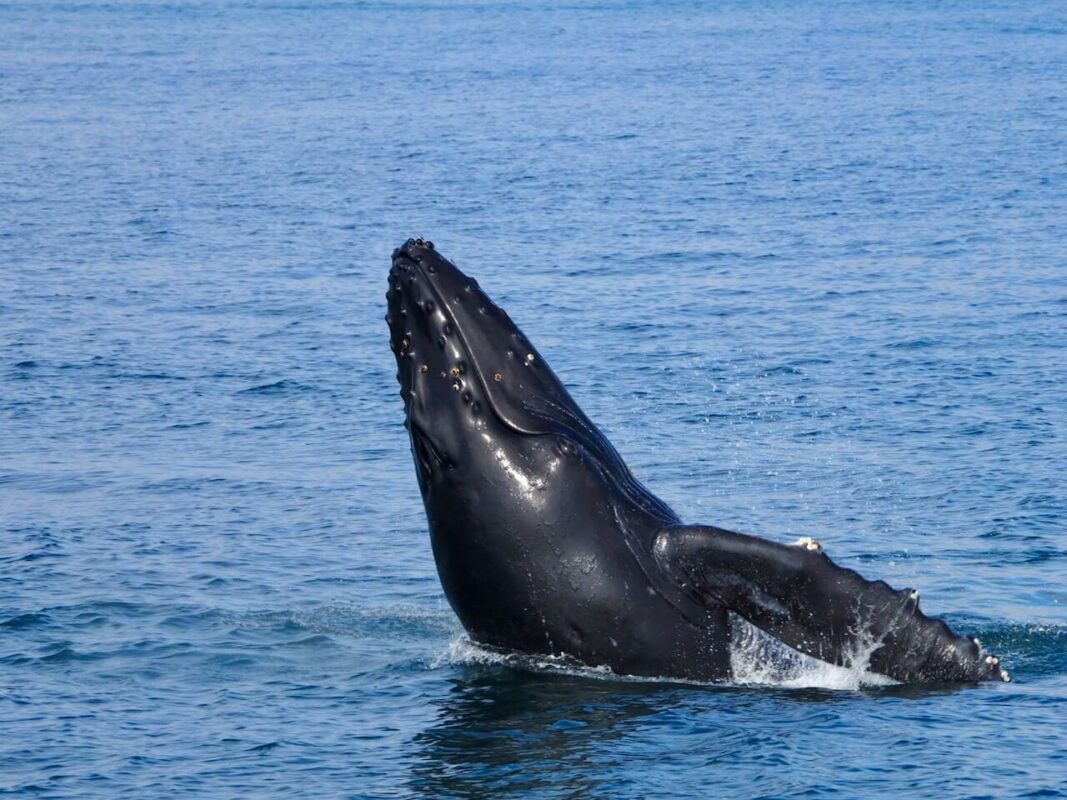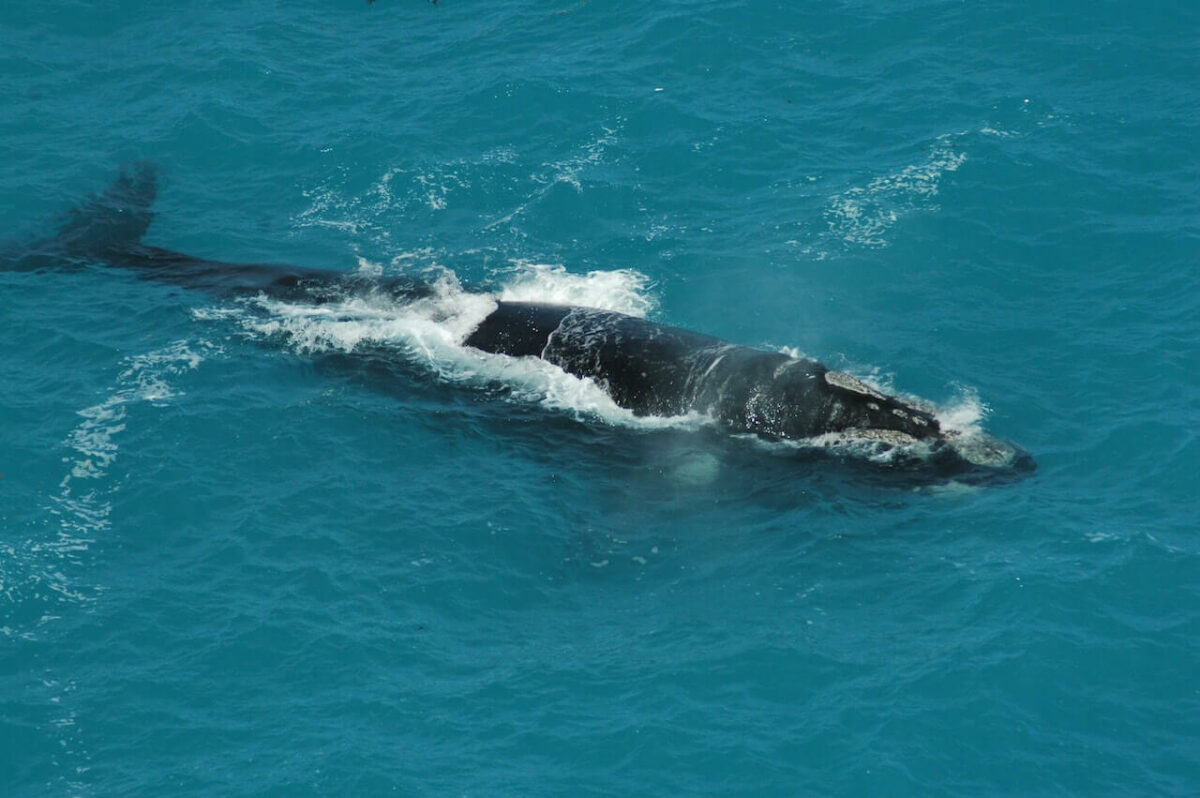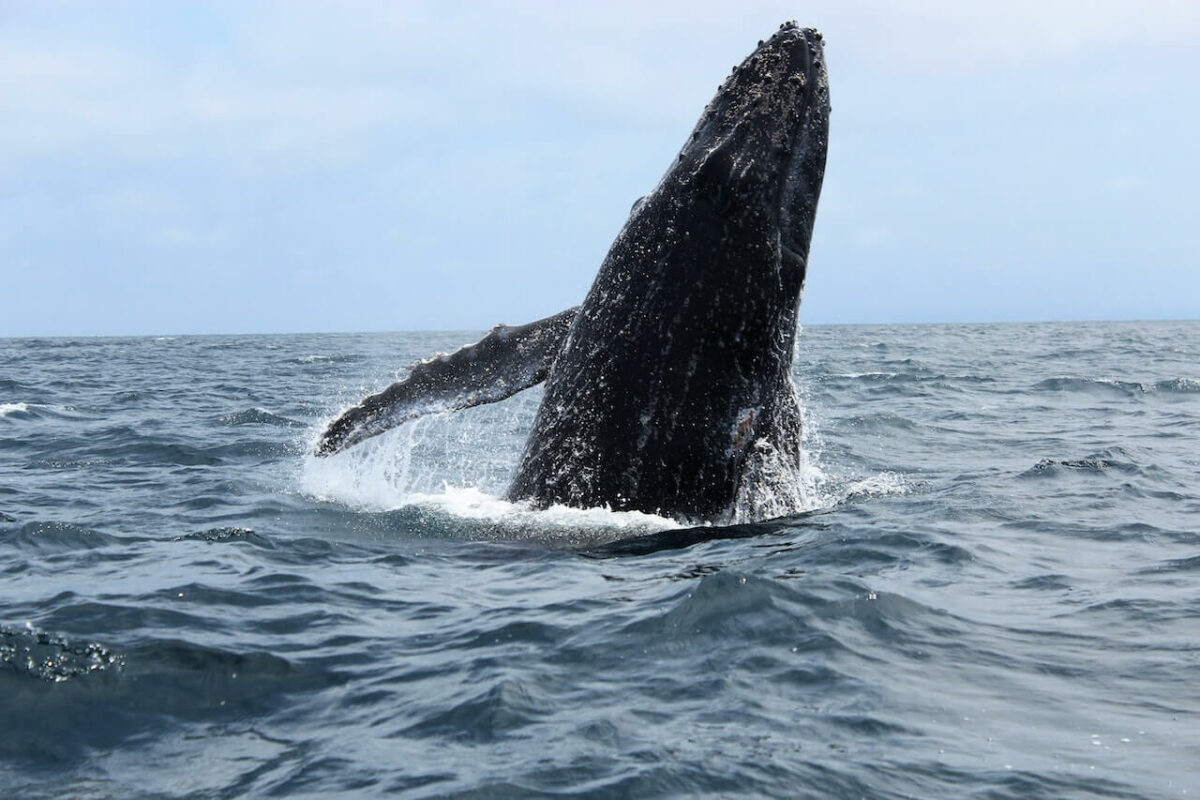Whales are truly fascinating animals that inhabit all oceans of the world, from the polar waters of the Arctic and Antarctic oceans to the tropical waters around the equator.
With over 40 different species, these animals vary in size, habitat, behaviors, and diet, with different whales eating different food sources.
Despite their enormous size, whales are known for their gracefulness whilst roaming the oceans and being curious toward humans.
One of the most common questions that often comes up when discussing these marine mammals is their diet, and specifically, what do whales eat?
In this post, we’ll explore everything you need to know about the whales’ diet and what they eat, as well as the different types of whales and how their diets differ.
Let’s get into it…
What Do Whales Eat?
Whales are HUGE animals that require a diet that is rich in calories and nutrients to sustain them and provide them with enough energy to survive in the ocean.
That’s why ALL whales are carnivorous and feed on a variety of prey including small fish, squid, krill, crustaceans, and much more.
The diet of whales varies depending on the species and their geographical location, with some places such as the Arctic ocean offering more abundant feeding grounds than elsewhere.

Many whales make their way to the Arctic in the summer months to feed on the abundance of krill there during that time, fattening themselves up by eating as much as four tonnes of krill each day.
However, other whales such as sperm whales prefer to feed on heartier prey, including sharks, skates, giant squid, and more.
Do All Whales Eat Meat?
As mentioned, whales are carnivorous which means they DO eat meat.
Whilst whales don’t eat the same type of meat as many land animals, the food sources they eat are meat, which is why they are considered carnivores.
The type of meat they eat differs depending on the type of whale, with some species such as humpbacks and blue whales, feeding almost exclusively on small fish and plankton, whereas other whales eat larger prey.
Meat is packed full of calories and nutrition which fuels the whales to live in the ocean and allows them to make sometimes long migrations to feeding or mating grounds.
For whales, plants simply don’t offer the same level of nutrition as eating meat and the ocean is richer with fish and other prey than it is with plants to feed on.
Whales also have special adaptations that allow them to catch lots of prey at the same time without expending lots of energy, so it makes sense for whales to eat meat.
Baleen Whale vs Toothed Whale Diet
Whales are split into two broad categories that differ in several ways, including their physical appearance, characteristics, behavior, and diet.
The two types of whales have different adaptations that allow them to catch different types of prey.
Baleen Whale
Gray whales, humpback whales, blue whales, fin whales, and another ten whale species’ are categorized into the baleen whale family.
These whales are generally larger than toothed whales and have a distinct physical feature called baleen plates.
The plates are located and hang down from the whale’s upper jaw, and they act as a method to trap small prey such as krill and plankton in the whale’s mouth when feeding.
Baleen plates are made from keratin, the same material found in human hair and nails, and they work as a filter for small organisms.

This allows baleen whales to take large mouthfuls of water and prey, with the baleen plates trapping the prey in the whale’s mouth before the whale expels the excess water.
It’s a fascinating adaptation that allows baleen whales to eat TONNES of small prey every single day.
Krill, plankton, small fish, squid, and crustaceans are the primary food sources of all baleen whales as they don’t have teeth, therefore, are unable to hunt larger prey.
Toothed Whale
The other type of whale is the toothed whale. These include 77 different species that are grouped into ten families and include many dolphin species.
Sperm whales, killer whales, cuvier’s beaked whales, beluga whales, and false killer whales all belong to the toothed whale family.
These are whales that, you guessed it… have teeth. This means they have the ability to hunt and capture much larger prey using their teeth.
Killer whales for example are apex predators that take down just about everything that lives in the ocean and has a pulse.
They will feed on humpback whales, octopuses, stingrays, fish, sharks, and much more.
In fact, orcas eat over 140 different prey species depending on their location, and will even eat moose if they have to.
Killer whales have large, three-inch-long teeth that are incredibly sharp and allow them to rip through the thick blubber of seals, whales, and more.
Sperm whales on the other hand prefer to dive to great depths in order to hunt and capture giant squid, their favorite food.
As a whole, toothed whales are able to eat much more food than baleen whales as they are equipped with larger teeth.
They eat fish, squid, and other marine mammals as part of a varied diet that helps keep them strong and full of energy.
More On Whales’ Diet
Whales are a set of truly diverse marine mammals that have a wide range of diets depending on their species, habitats, and prey availability.
Whilst some species feed on mostly small fish and krill, others feed on large marine mammals and are active predators.

Baleen whales have the ability to open and expand their throats which means they can take in as much as 500kg of krill per mouthful.
Whereas, toothed whales such as orcas use sophisticated hunting techniques to take down whales, seals, and sharks.
Their unique behaviors and hunting skills make whales some of the most fascinating animals on earth, and the more we study them the more we learn about their world.
Wrapping Up
In summary, whales have varied diets depending on the species, with many feeding on small fish, krill, squid, plankton, and other species feeding on marine mammals.
Ultimately, the diet of whales’ depends on prey availability, geographical location, and the species of the whale.
These enormous animals are carnivorous and eat massive quantities of food every day, especially in the summer months.
Many whales migrate to the abundant Arctic waters to take advantage of the abundance of prey there, fattening themselves up before making their way to their breeding grounds.
Thanks for taking the time to read this post and learn more about the diet of whales today.
Hopefully, you’ve enjoyed your time here, feel free to stick around to learn more about the wonderful world of whales.
See you next time.

Hi, I’m George – the founder of MarinePatch. I created this blog as marine wildlife has been my passion for many years. I’ve spent over a decade in the marine wildlife industry and spent years out in the field conducting research. In today’s modern world, an online blog is the best place for me to share my findings and reach as many people as possible to help educate and inspire others. Enjoy your time here and you’re welcome back anytime!

